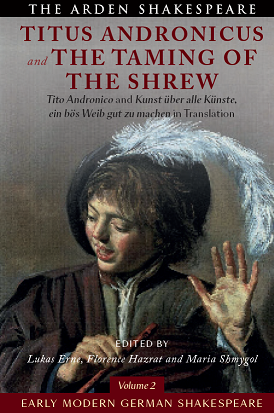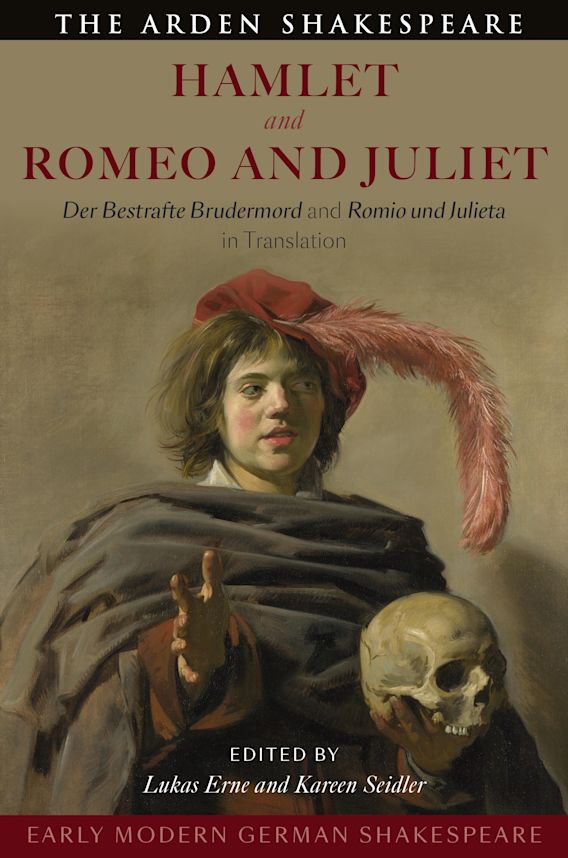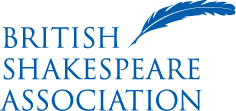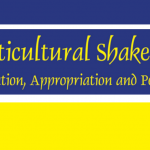
CFP for the first CIRCE CONFERENCE (June 2022): Comparative Approaches to the Study of Early Modern Theatre on Screen
17th November 2021
BSA member Víctor Huertas Martín shares the following call for papers for the inaugural conference of the CIRCE project.
About CIRCE
Early Modern Theatre, developed mainly in Spain, France, Italy, England and Portugal, has been adapted to cinema, television and, more recently, to multimedia. Since their respective inceptions, these audiovisual media have contributed to the public dissemination of the works of Shakespeare, Lope de Vega, Calderón de La Barca, Gil Vicente, Molière, Racine and many others. To the film productions developed at different historical junctures, we may add the television adaptations which, with greater or lesser degrees of canonicity, boosted during the twentieth century the audiovisual reception of this theatrical legacy in Europe and beyond. They did so, as films did, not only adapting the plays in their own languages but also in foreign languages. More recently, as a consequence of the development of digital technologies and streaming channels, such as live theatre, new impetus to the dissemination of early modern theatre have succeeded in enthusing audiences worldwide.
Looking into the different conventions to adapt plays to the screen during specific time periods, we observe similarities and contrasts in contemporaneous adaptations. These similarities and contrasts allow us to think of ways of organizing these adaptations as part of a holistic European tradition, however complex and dislocated such tradition may seem. For example, Pilar Miró was inspired, while directing El Perro del Hortelano (1996), not only by the Russian cinematic precedent Sobaka na Sene (dir. Yan Frid, 1978), but also by the Shakespearean adaptations made by Kenneth Branagh in the 1990s. During the 1950s, 1960s, 1970s and 1980s, various European public broadcasters devoted time and artistic expertise to transferring important examples of their theatrical traditions and also of foreign plays to the television screens. This helped to create a series of conventions–emphasis on naturalistic recitation faithful to the original texts; textual delivery in close-up; simplicity of sets and use of small recording places; recording routines using two or three cameras; creation of atmospheres via chiaroscuro lighting to make the most of the scarcity of technical resources, etc.–which could be found in different countries when adapting the classics. Outstanding screen directors worked on plays by authors from different traditions. For example, Antonio Román directed Shakespeare and Lope de Vega for the big screen; Pedro Amalio López directed Shakespeare, Lope de Vega and Calderón for television and, currently, Don Kent combines the screen direction of Shakespeare and Molière.
Some of the most representative works of this theatrical legacy have not appeared in the form of canonical adaptations. Rather, they are to be found in more or less diffuse forms in audiovisual adaptations which also draw on other sources to rethink the myth to which they belong. This phenomenon affects characters such as Faust, whose Marlovian source is present, albeit recast with other versions of the legend, in Faust (dir. F. W. Murnau, 1926) or in A Lesson in Faust (dir. Jan Svankmayer, 1994). This also affects legends such as that of the Alcalde de Zalamea, two of whose versions are recast in La Leyenda del Alcalde de Zalamea (dir. Mario Camus, 1975). Less evidently, this phenomenon extends to figures such as that of Inés de Castro, whose presence is widely found in the Portuguese, Spanish, English and French theatrical traditions and which was transferred to the French and Portuguese screen with the films The Dead Queen (dir. Pierre Boutron, 2009) or Pedro ê Inés (dir. António Ferreira, 2018) and the television series Pedro ê Inés (dir. João Cayatte, 2005). These examples demonstrate that the audiovisual appropriation of this theatrical legacy is a complex phenomenon that requires sustained attention from scholars of different theatrical traditions.
Inaugural CIRCE virtual conference
During these FIRST CIRCE CONFERENCES, we will address this complex theatrical legacy together. We will establish links and deep relationships between plays from different traditions transferred to the screen. We will identify trends in the adaptation of early modern European theatre in different audiovisual media, paying attention to different aspects of adaptation. Likewise, we will try to construct holistic visions on the reception of European theatre on the screen.
To this end, we will examine a large corpus of audiovisual adaptations of early modern plays, paying attention to such angles as:
• Transposition of plays from stage to screen
• Ideological readings of these adaptations from multiple perspectives
• Emergence of new forms of audiovisual adaptation of theatre in times of pandemic
• Analysis of scripts as literary adaptations of theatrical texts
• Work of directors, performers, musicians and other members of technical casts
• Analysis of audiovisual conventions in early modern theatre adaptation
• Translation-based, spatial, paratextual and intertextual approaches
• Transnational approaches
• Gender perspectives
• Other
Keynote Speakers
ALBA CARMONA LÁZARO (Universitet i Bergen)
A pioneer in the study of new comedy in film adaptation, particularly in Spain, Germany and the Soviet Union, she is the author of, among others, Las reescrituras fílmicas de la comedia nueva: un siglo en la gran pantalla (2020) and Unos clásicos… ¡de cine! El teatro del Siglo de Oro en el lienzo de plata (1914-1975) (2021), preceded by the exhibition at Casa Museo Lope de Vega of Madrid.
RAMONA WRAY (Queen’s University Belfast)
Author of Women Writers of the Seventeenth Century (2004), co-author of Great Shakespeareans: Welles, Kurosawa, Kozintsev, Zeffirelli (2015), editor of Elizabeth Cary Arden’s The Tragedy of Mariam Early Modern Drama (2012), she is also co-editor and contributor to a voluminous number of monographs related to Shakespeare on screen.
Scientific Committe
PASCALE AEBISCHER (University of Exeter) JOSEFA BADÍA HERRERA (Universitat de València) ELENA BANDÍN FUERTES (Universidad de León) SYLVAINE BRENNETOT (Université Paul-Valéry Montpellier 3) JOSÉ CAMOES (Centro de Estudos de Teatro/Universidade de Lisboa) RUI CARVALHO HOMEM (Universidade do Porto) JUAN FRANCISCO CERDÁ MARTÍNEZ (Universidad de Murcia) PASCALE DROUET (Université de Poitiers) SEBASTIANA FADDA (Centro de Estudos de Teatro/Universidade de Lisboa) PURIFICACIÓN GARCÍA MASCARELL (Universitat de València) ROSA GARCÍA PERIAGO (Universidad de Murcia) SARAH HATCHUEL (Université Paul-Valéry Montpellier 3) ESTHER LÁZARO SANZ (Universitat Autònoma de Barcelona) MIGUEL MARTÍNEZ LÓPEZ (Universitat de València) JOAN OLEZA SIMÓ (Universitat de València) PEDRO JAVIER PARDO GARCÍA (Universidad de Salamanca) JUANA INÉS RODRÍGUEZ GÓMEZ (Universitat de València) JESÚS TRONCH PÉREZ (Universitat de València) NATHALIE VIENNE-GUERRIN (Université Paul-Valéry Montpellier 3) RAMONA WRAY (Queen’s University Belfast) RETO WINCKLER (Normal University of China) JUAN CARLOS HIDALGO CIUDAD (Universidad de Sevilla)
Organising Committe
ANNA MARÍA BRÍGIDO COCHARÁN (Universitat de València) ELENA CASTELLANO ORTOLA (Universitat de València) LUIS CONEJERO MAGRO (Universidad de Extremadura) ANA FERNÁNDEZ CAPARRÓS (Universitat de València) MARÍA GAVIÑA COSTERO (Universitat de València) CARMINA GRIGORI SIGNES (Universitat de València) ROCÍO GUTIÉRREZ SUMILLERA (Universidad de Granada) ARTURO MORA-RIOJA (KEA – Københavns Erhvervsakademi) VÍCTOR HUERTAS MARTÍN (Universitat de València) SILVIA HUESO FIBLA (Universitat de València) LAURA MONRÓS GASPAR (Universitat de València) RAFAEL NEGRETE PORTILLO (Universidad Complutense de Madrid) NORA RODRÍGUEZ LORO (Universidad de Salamanca) DIEGO ERNESTO PARRA SÁNCHEZ (Universitat de València) NEL DIAGO (Universitat de València)
The conference will be held online on 1-3 June 2022 at the Faculty of Philology, Translation and Communication of the University of Valencia.
Submissions
Contributors should write to Silvia Hueso-Fibla enclosing:
1. A 300-400-word abstract explaining their proposal. We recommend the following structure: hypothesis, objectives, methodology, structure, summary of expected conclusions, bibliography (not included in word count).
2. An auto-biography (100-200 words).
The deadline for submitting proposals is 15 January 2022. Acceptances will be communicated on 15 February 2022. The deadline for payment of the registration fee is 31 March 2022.
A selection of proposals will be included in the volume that will be published with the results of the conference.
The fee to take part in the conference will be 50 euros (established academics) or 25 euros (doctoral students or postgraduate and undergraduate students).
We hope to be able to count on you for what we believe will be an unforgettable experience.
NOTE: Papers may be submitted in any of the languages corresponding to the five European theatre traditions of the 16th and 17th centuries: Italian, French, Spanish, Portuguese and English.









